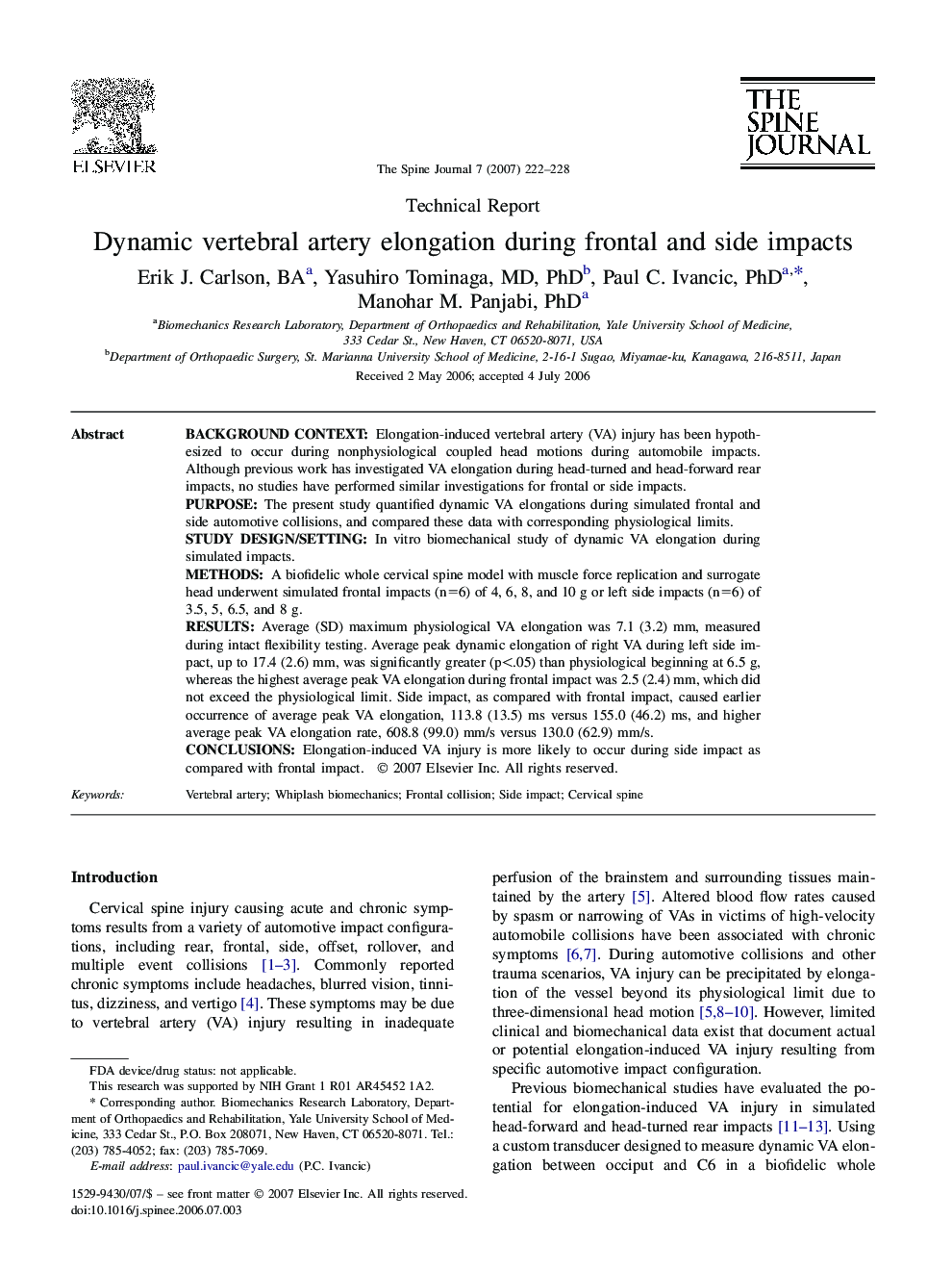| Article ID | Journal | Published Year | Pages | File Type |
|---|---|---|---|---|
| 4099375 | The Spine Journal | 2007 | 7 Pages |
Background contextElongation-induced vertebral artery (VA) injury has been hypothesized to occur during nonphysiological coupled head motions during automobile impacts. Although previous work has investigated VA elongation during head-turned and head-forward rear impacts, no studies have performed similar investigations for frontal or side impacts.PurposeThe present study quantified dynamic VA elongations during simulated frontal and side automotive collisions, and compared these data with corresponding physiological limits.Study design/settingIn vitro biomechanical study of dynamic VA elongation during simulated impacts.MethodsA biofidelic whole cervical spine model with muscle force replication and surrogate head underwent simulated frontal impacts (n=6) of 4, 6, 8, and 10 g or left side impacts (n=6) of 3.5, 5, 6.5, and 8 g.ResultsAverage (SD) maximum physiological VA elongation was 7.1 (3.2) mm, measured during intact flexibility testing. Average peak dynamic elongation of right VA during left side impact, up to 17.4 (2.6) mm, was significantly greater (p<.05) than physiological beginning at 6.5 g, whereas the highest average peak VA elongation during frontal impact was 2.5 (2.4) mm, which did not exceed the physiological limit. Side impact, as compared with frontal impact, caused earlier occurrence of average peak VA elongation, 113.8 (13.5) ms versus 155.0 (46.2) ms, and higher average peak VA elongation rate, 608.8 (99.0) mm/s versus 130.0 (62.9) mm/s.ConclusionsElongation-induced VA injury is more likely to occur during side impact as compared with frontal impact.
